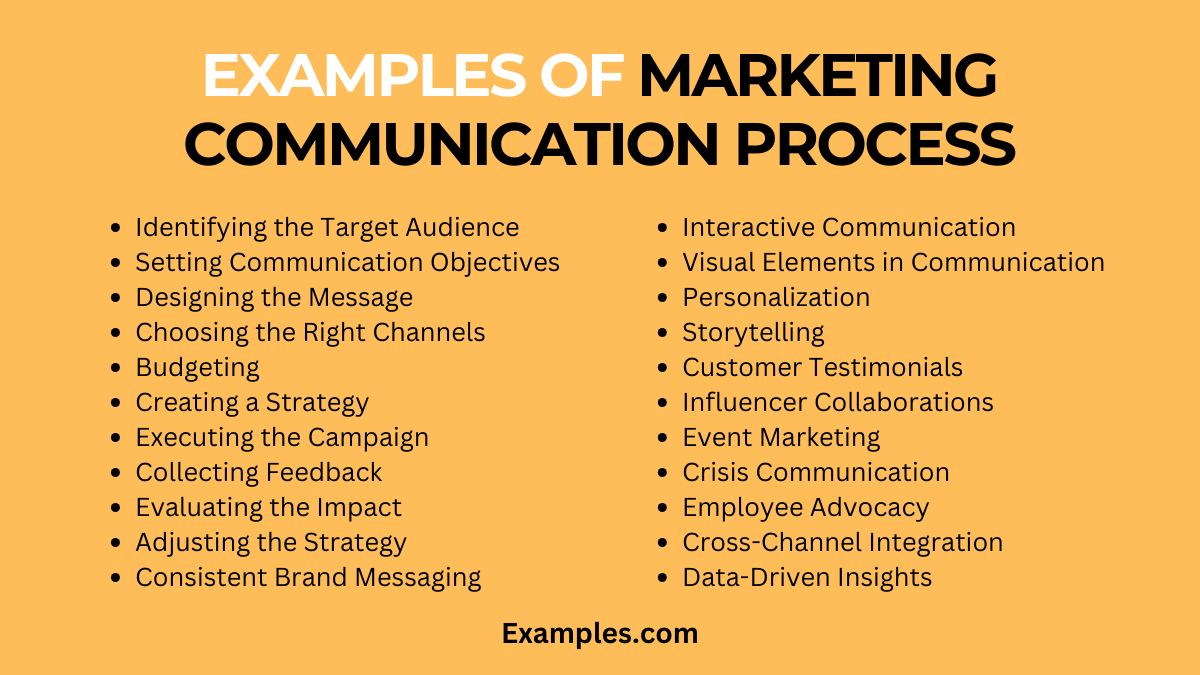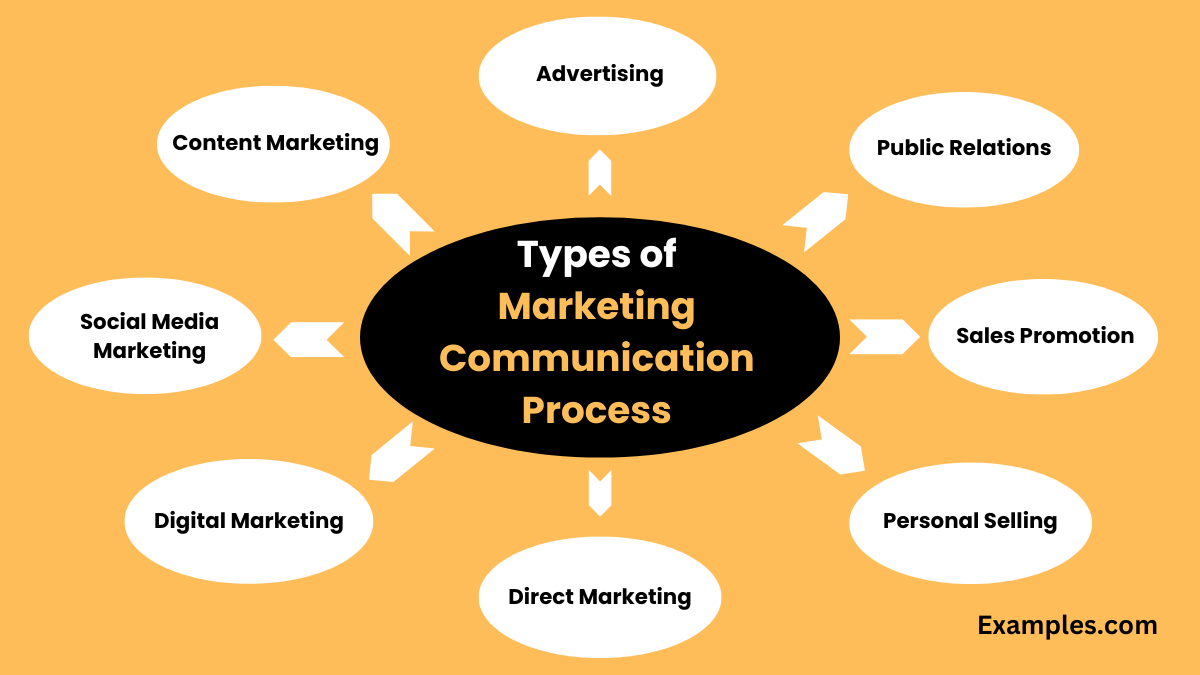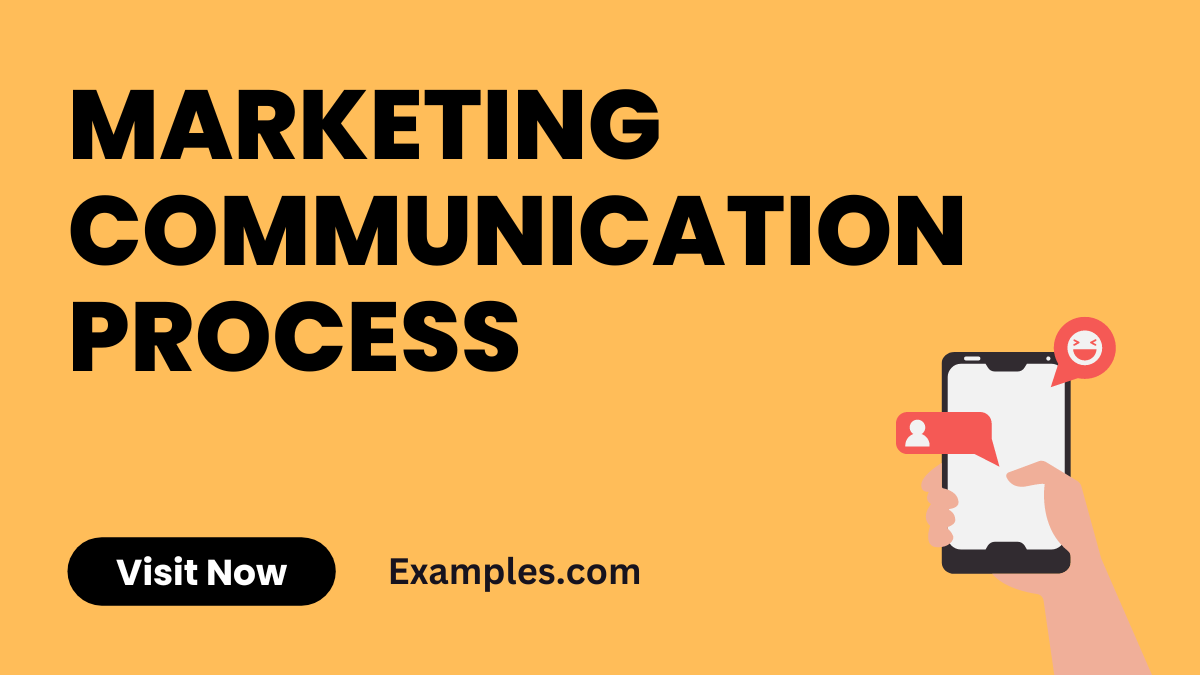Marketing Communication Process
The Marketing Communication Process is a vital aspect of any successful marketing strategy. This process involves a series of steps to ensure that the message conveyed is effective and resonates with the target audience. It includes identifying the audience, crafting the message, choosing the right channels, and evaluating the results. Marketing Communication Examples illustrate how these steps are implemented in real-world scenarios, providing valuable insights for businesses looking to enhance their marketing efforts. This guide will delve into the intricacies of this process, offering examples and tips to help you refine your marketing communications.
What is Marketing Communication Process?

The marketing communication process is a systematic approach used by organizations to convey messages about their products or services to their target audience. It involves the creation, delivery, and management of messages from a brand to its consumers. The objective is to effectively communicate the brand’s value proposition, build and maintain customer relationships, and ultimately drive consumer action, such as making a purchase or enhancing brand loyalty.
15 Marketing Communication Process Examples

- Audience Identification: Understanding your target audience is crucial. Tailor your messages to their needs and preferences.
Example: Conduct market research to create customer personas for a new product launch. - Message Creation: Craft a message that resonates with your audience and reflects your brand values.
Example: Develop a campaign slogan that encapsulates the eco-friendly nature of your new product line. - Choosing the Right Channels: Select the most effective channels to reach your audience.
Example: Utilize social media platforms for a campaign targeting millennials. - Feedback Mechanisms: Implement ways to gather audience feedback.
Example: Include a survey link in your email campaign to gauge customer response. - Consistency Across Channels: Ensure your message is consistent across all platforms.
Example: Use the same visual and textual themes on your website, social media, and email newsletters. - Timing of Communication: Timing can be crucial in marketing communication.
Example: Schedule your product launch announcements to coincide with industry-relevant events. - Personalization: Personalize messages to increase relevance and engagement.
Example: Send personalized product recommendations to customers based on their purchase history. - Visuals and Branding: Use visuals and branding effectively to reinforce your message.
Example: Incorporate your brand colors and logo in all marketing materials. - Storytelling in Marketing: Use storytelling to make your message more compelling.
Example: Share customer success stories in your digital marketing content. - Interactive Content: Create interactive content to engage the audience.
Example: Develop an interactive quiz related to your product for social media. - Use of Influencers: Collaborate with influencers to expand reach.
Example: Partner with a well-known blogger in your industry for product promotion. - Crisis Communication Planning: Prepare for potential crises in your communication strategy.
Example: Have a crisis communication plan in place for handling negative feedback on social media. - Continuous Improvement: Regularly review and improve your communication process.
Example: Analyze campaign performance data to refine future marketing strategies. - Legal and Ethical Considerations: Adhere to legal and ethical standards in your communications.
Example: Ensure all marketing materials comply with advertising regulations and standards. - Integration with Overall Marketing Strategy: Align your communication process with your overall marketing strategy.
Example: Ensure your marketing communications support and enhance your brand’s broader strategic goals.
Types of Marketing Communication Process

The marketing communication process encompasses various forms, each serving a unique purpose in engaging the target audience. These types include:
- Advertising: Utilizes various media channels to promote products or services.
- Public Relations: Focuses on maintaining a positive public image and building relationships with the audience.
- Sales Promotion: Involves short-term incentives to encourage purchasing.
- Personal Selling: Entails direct interaction between a salesperson and a customer to persuade a purchase.
- Direct Marketing: Involves communicating directly with targeted individual consumers.
- Digital Marketing: Uses online platforms for promotional activities.
- Social Media Marketing: Leverages social media platforms to engage with a target audience.
- Content Marketing: Involves creating and sharing content to attract and retain customers.
- Event Marketing: Promotes a brand through events or sponsorships.
- Integrated Marketing Communications: Combines various communication methods to provide a consistent message across all platforms.
Why is the Communication Process important in Marketing?
- Ensures Clarity and Consistency: A well-defined communication process helps in delivering clear and consistent messages to the audience.
Example: Coca-Cola’s consistent brand messaging across all marketing channels. - Builds Brand Awareness: Effective communication introduces and reinforces brand identity to the public.
Example: Nike’s “Just Do It” campaign that built strong brand recognition. - Facilitates Customer Engagement: Engaging communication strategies help in maintaining customer interest.
Example: Starbucks’ interactive social media campaigns that engage customers. - Supports Targeted Messaging: Tailored communication allows for reaching specific segments of the market effectively.
Example: Sephora’s personalized email marketing campaigns. - Enhances Customer Trust and Loyalty: Consistent and honest communication builds trust and loyalty among customers.
Example: Patagonia’s transparent marketing about its environmental initiatives. - Drives Sales and Revenue: Strategic communication leads to increased sales and profits.
Example: McDonald’s promotional campaigns that boost short-term sales. - Aids in Crisis Management: Effective communication can mitigate negative publicity during a crisis.
Example: Johnson & Johnson’s communication strategy during the Tylenol crisis. - Promotes Customer Education: Educating customers about products/services through communication is crucial.
Example: Apple’s product launch events that educate customers about new features. - Facilitates Feedback and Improvement: Communication channels allow for customer feedback, leading to improvements.
Example: Amazon’s customer review system. - Supports Market Research: Communication helps in gathering data about customer preferences and market trends.
Example: Google’s use of data analytics to understand user behavior.
Steps for Marketing Communication Process
- Identifying the Target Audience: Determine who your message is intended for. Example: A new skincare line targeting women in their 30s.
- Setting Communication Objectives: Define what the communication aims to achieve. Example: Increasing brand awareness by 20% in the next quarter.
- Designing the Message: Create a message that resonates with the target audience. Example: Developing an eco-friendly message for a sustainable brand.
- Choosing the Communication Channel: Select appropriate channels to reach the audience. Example: Using social media for a youth-oriented product.
- Budget Allocation: Allocate resources for the communication campaign. Example: Setting aside a budget for online advertising.
- Creating the Communication Strategy: Develop a plan on how to deliver the message. Example: A multi-platform campaign combining digital and traditional media.
- Executing the Campaign: Implement the communication plan. Example: Launching a nationwide advertising campaign.
- Gathering Feedback: Collect responses from the audience regarding the communication. Example: Using surveys to gauge customer reactions.
- Evaluating the Results: Assess the effectiveness of the communication process. Example: Analyzing sales data post-campaign to measure impact.
- Making Adjustments: Modify the strategy based on feedback and results. Example: Tweaking the message or channels based on customer feedback.
Each of these steps is crucial in ensuring the effectiveness of the marketing communication process, ultimately leading to the successful promotion of products or services and the achievement of marketing objectives.
In conclusion, mastering the Marketing Communication Process is essential for effective brand messaging. By understanding and implementing these steps, along with practical examples and tips provided, businesses can create impactful marketing strategies that resonate with their audience. This guide serves as a comprehensive resource for navigating the complexities of marketing communications in today’s dynamic market.



